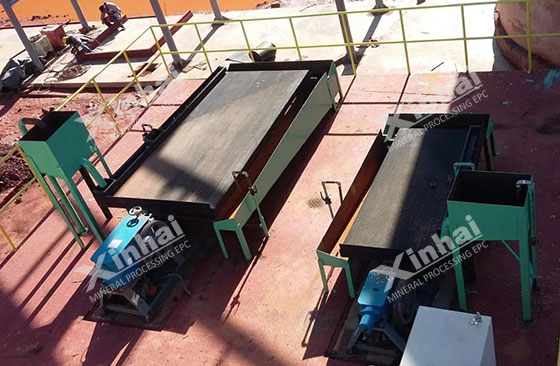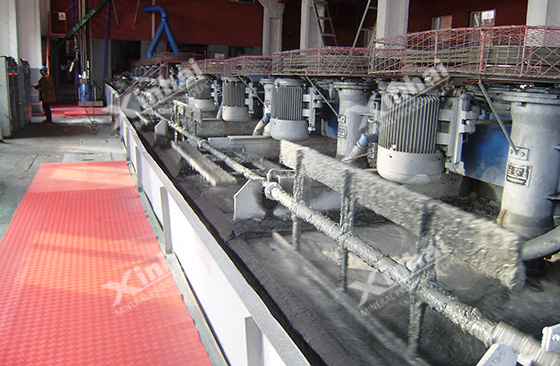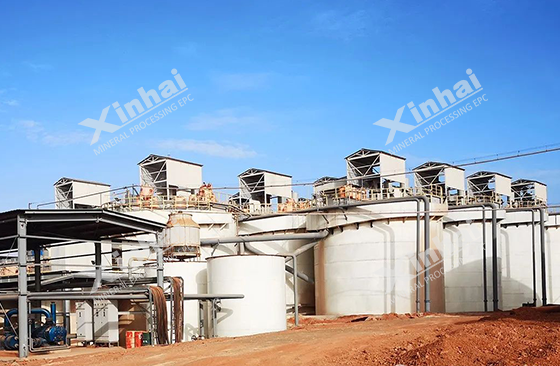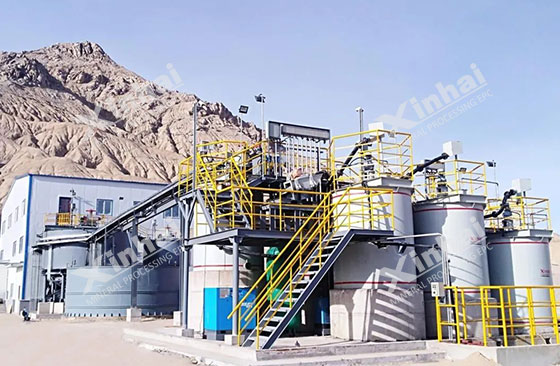
In recent years, with the increase in global demand for gold, although gold production has also increased year by year, the increase in demand has been more significant, driving the continuous rise in gold prices. This economic stimulus has driven the rapid development of the gold industry. However, with the gradual depletion of gold resources, the resources of gold ore that are easy to beneficiate and smelt are becoming less and less, and countries around the world have begun to strengthen the development and utilization of refactory gold resources.
There are many types of refactory gold ore resources with complex causes. The most challenging of them are arsenic-containing and sulfur-containing ores. The presence of arsenic in the ore is extremely harmful to the cyanidation gold extraction process, and sometimes even makes the cyanidation process impossible. The effective utilization of such refactory ores has become one of the important topics in the gold mining industry.

Depending on the properties of the ore, the gold ore recovery process mainly includes gravity separation, flotation and cyanidation. The selection of these three methods depends on the characteristics of the ore and can effectively extract different types of gold resources.
1. Gravity separation
Gravity separation is a mineral processing method based on the difference in mineral density, which is mainly used to recover placer gold and granular gold. The density of gold is much greater than that of gangue minerals, and gold is separated from the ore by gravity separation. This method is applied to ores rich in gold particles and with obvious density differences, and has the advantages of simple process and low cost.

2. Flotation
Flotation is one of the most widely used mineral processing processes in gold production. It uses the difference in the chemical properties of the mineral surface to separate gold minerals from gangue minerals by adding chemical agents. Gold minerals often coexist with sulfide minerals such as pyrite, chalcopyrite, galena, sphalerite, etc., which are also ideal carriers for flotation. Through the flotation process, gold can be enriched in sulfide concentrates to achieve efficient recovery.
Flotation is particularly suitable for processing gold ores that coexist with sulfides in primary gold deposits, and can maximize the recovery rate of gold. This method occupies an important position in modern gold extraction technology.

3. Cyanidation method
Cyanidation method is currently the most widely used gold extraction method in the world, suitable for processing gold oxide ore or gold concentrate. Its main advantages are high recovery rate and strong adaptability, especially suitable for local gold production. The core of cyanidation method is to extract gold from ore through chemical reaction between cyanide and gold.
Cyanidation gold extraction technology has been developed for many years, especially in the recovery of gold from cyanidation precious liquid, and has derived a variety of recovery methods:
3.1 Zinc replacement method
Zinc replacement method is one of the earliest methods used to recover gold from cyanidation precious liquid, with a recovery rate of more than 97% and a fast reaction speed. Its disadvantage is that it requires solid-liquid separation of the slurry and deoxygenation of the precious liquid before replacement. Therefore, zinc replacement method is mainly suitable for the treatment of clarified liquid.
3.2 Carbon adsorption method
The carbon adsorption method can be divided into carbon slurry method and carbon leaching method according to its operation mode. Both carbon slurry method and carbon leaching method use activated carbon to adsorb gold ions in cyanidation precious liquid to achieve gold recovery. This method has good adaptability, especially for low-grade ores, and has a high recovery rate.

3.3 Ion exchange method
The ion exchange method uses cation exchange resin to adsorb and recover gold. The choice of resin has a great influence on the recovery effect. Strong alkaline resins have strong adsorption capacity but poor selectivity, while weak alkaline resins need to be protonated before use. In recent years, guanidine resins have gradually become an efficient choice, and their gold loading capacity and selectivity are better than traditional resins and activated carbon.
3.4 Solvent extraction method
The solvent extraction method has been widely studied since the 1980s and has developed rapidly since then. This method uses amine extractants to extract gold at high pH values and is easy to strip. It has the advantages of fast speed, good selectivity, and anti-poisoning. Compared with solid ion exchangers, solvent extraction shows higher efficiency in the treatment of certain complex ores.
Although the cyanidation method has wide adaptability, the efficiency of gold extraction by cyanidation will be limited when the gold ore contains a large amount of arsenic, carbon or the gold is embedded in a fine particle size. To overcome these problems, modern mineral processing technology continues to innovate, including the use of pretreatment methods such as roasting, pressure oxidation and fine grinding to improve the cyanidability of the ore.

In addition, for different types of refactory ores, a mixed process combining multiple mineral processing methods has also become an industry trend. For example, first enriching the carrier mineral of gold by flotation and then extracting gold by cyanidation can significantly improve the recovery rate.
With the reduction of easily processed gold resources, the development and utilization of refactory gold ores has become the focus of the gold industry. Gravity separation, flotation and cyanidation each have their own advantages and application areas, providing effective recovery methods for different types of gold resources. In the future, with the continuous advancement of mineral processing technology, the recovery rate and economic benefits of refactory gold ores will be further improved, providing a solid resource guarantee for the global gold market.
To find out more about our products and solutions, please fill out the form below and one of our experts will get back to you shortly.